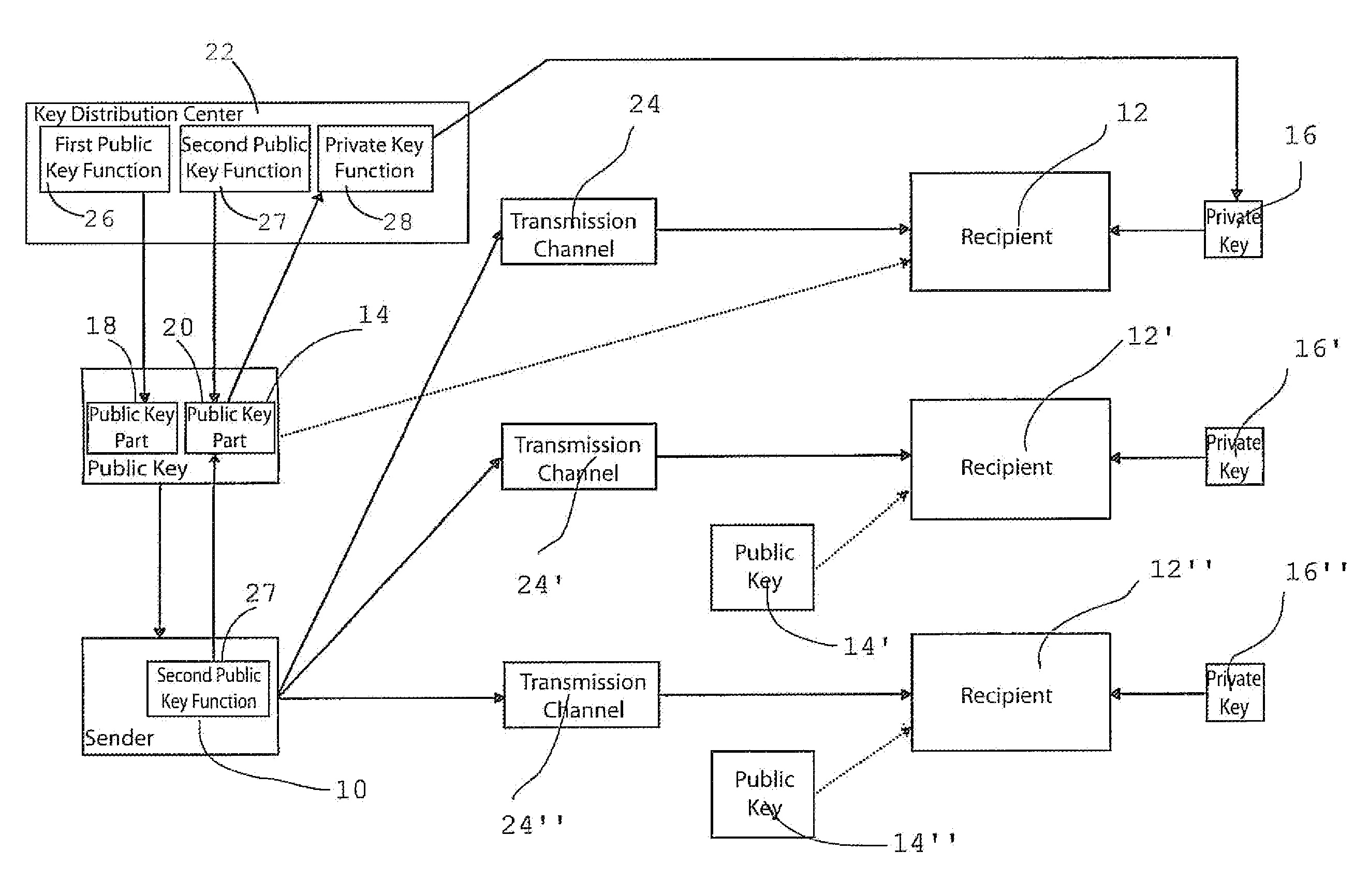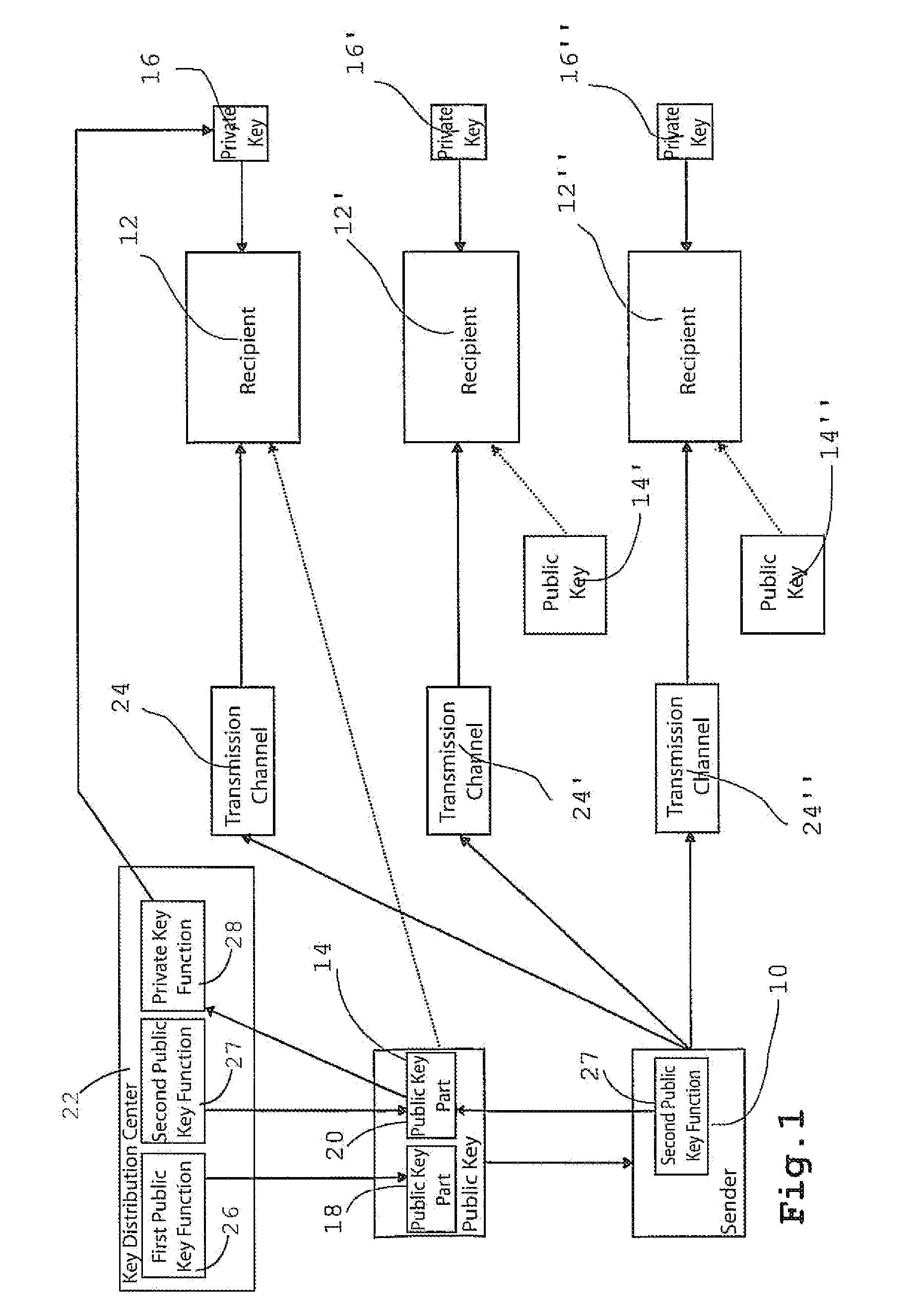Method for the computer-assisted production of public keys for encoding information and device for carrying out said method
a technology of computer-assisted production and information, which is applied in the direction of public key for secure communication, key distribution for secure communication, digital transmission, etc., can solve the problems of large computational effort, difficult and involved in the calculation of private key ps from public key ös, and the inability to find the prime factors
- Summary
- Abstract
- Description
- Claims
- Application Information
AI Technical Summary
Benefits of technology
Problems solved by technology
Method used
Image
Examples
Embodiment Construction
[0047]FIG. 1 schematically shows how a sender 10 can transmit encrypted messages over transmission channels 24, 24′ and 24″ to a recipient 12, 12′ and 12″, using the method according to the present invention.
[0048]Each of recipients 12, 12′, 12″ is assigned a private key 16, 16′, 16″ and a public key 14, 14′, 14″. In this respect, the method is similar to the known public key method. A typical transmission channel to be mentioned here is the Internet over which the messages are transmitted as encrypted e-mails.
[0049]Private keys 16, 16′, 16″ were generated by a key distribution center 22 and made available to recipients 12, 12′, 12″. When generating the private keys, data was used that uniquely indicates or identifies the specific recipients, such as the address of a recipient. In mathematical terms, the private keys is calculated as follows: pS=f {address, a, b}, with a and b being two prime numbers that are known only to key distribution center 22. To calculate private keys 16, 16...
PUM
 Login to View More
Login to View More Abstract
Description
Claims
Application Information
 Login to View More
Login to View More - R&D
- Intellectual Property
- Life Sciences
- Materials
- Tech Scout
- Unparalleled Data Quality
- Higher Quality Content
- 60% Fewer Hallucinations
Browse by: Latest US Patents, China's latest patents, Technical Efficacy Thesaurus, Application Domain, Technology Topic, Popular Technical Reports.
© 2025 PatSnap. All rights reserved.Legal|Privacy policy|Modern Slavery Act Transparency Statement|Sitemap|About US| Contact US: help@patsnap.com


